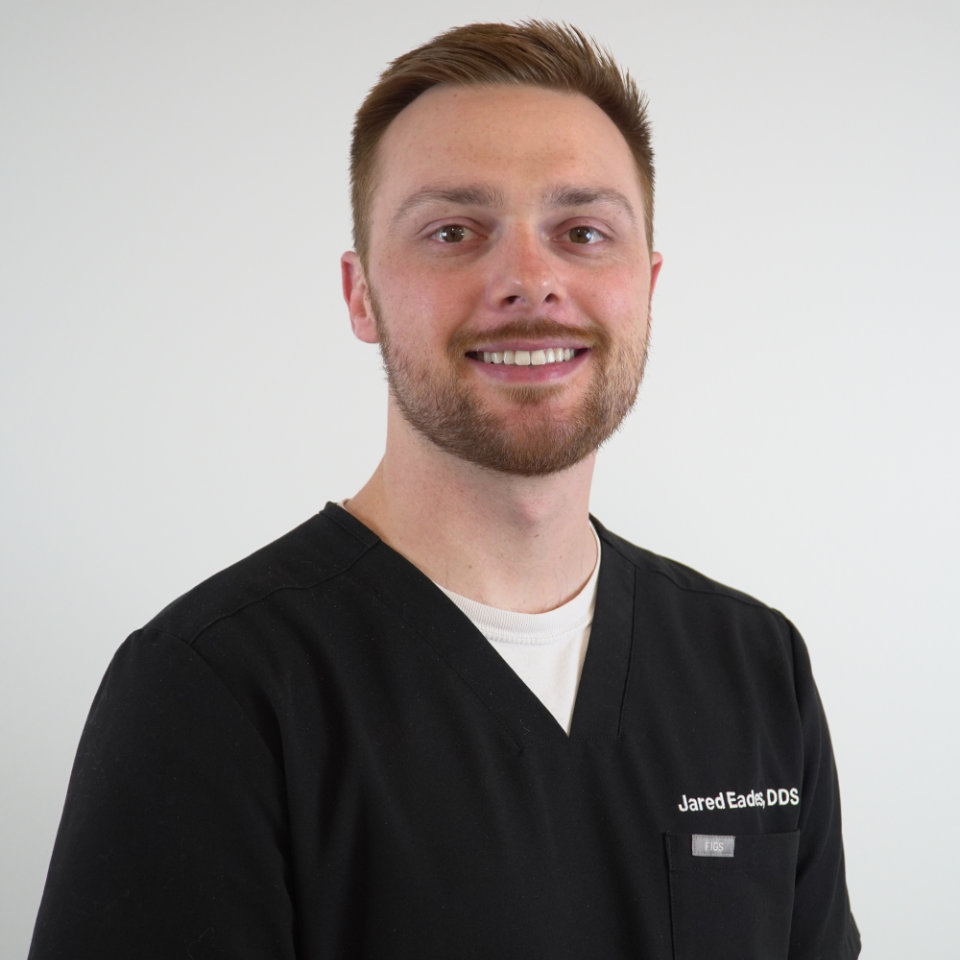Early detection represents the most powerful weapon in the fight against oral cancer, dramatically improving survival rates and treatment outcomes when this potentially deadly disease is caught in its earliest stages. Regular oral cancer screenings performed during routine dental visits provide painless, life-saving examination that can identify suspicious changes before they become life-threatening.
At Watson Family Dental, we prioritize comprehensive oral cancer screenings for all patients, understanding that early detection can mean the difference between a simple treatment and a devastating diagnosis for families throughout Watson.
The service I received from Dr. Eades made me feel at ease. Especially, when I was scared and nervous. Excellent work!!. The best dentist I’ve ever been to.
The Critical Importance of Early Detection
Oral cancer statistics reveal the urgent need for regular screening and early intervention. About 59,660 new cases of oral cavity or oropharyngeal cancer will be diagnosed in 2025, with approximately 12,770 deaths from these cancers. However, when oral cancer is caught in its earliest stages, the five-year survival rate is approximately 85%, compared to dramatically lower survival rates when diagnosis occurs at advanced stages.
“Early detection truly saves lives when it comes to oral cancer,” explains Dr. Eades. “The difference between catching mouth cancer at stage one versus stage four can literally determine whether a patient survives or not, which is why we take screenings so seriously during every examination.”
Understanding Oral Cancer and Mouth Cancer Risks
Oral cancer encompasses malignancies that can develop anywhere in the mouth or throat, including the tongue, lips, gums, floor of the mouth, roof of the mouth, and throat areas. The average 5-year survival rate in the U.S. is 64.3%, but this is highly stage-dependent, with approximately 70% of cases diagnosed at later stages, reducing survival rates from 83.7% when diagnosis occurs at a localized stage to 38.5% if the cancer has metastasized.
Know the Statistics About the Value of Early Detection
The 5-year relative survival for localized oral cavity and pharynx cancer is 88.4%, demonstrating the profound impact that early detection has on patient outcomes. However, only 26.2% of oral cancers are diagnosed at the local stage, highlighting the critical need for regular screening that can identify problems before they progress.
Risk Factors That Increase Your Need for Regular Screening
While oral cancer can affect anyone, certain risk factors significantly increase your likelihood of developing the disease, making regular professional screening even more important for early detection and prevention.
Tobacco use in all forms represents the most significant risk factor, with smoking and chewing tobacco dramatically increasing oral cancer risks. The combination of tobacco and alcohol use creates an even higher risk profile that demands vigilant screening protocols.
Human papillomavirus (HPV) infection, particularly HPV16, has become an increasingly important risk factor, especially for oropharyngeal cancers. Since the mid-2000s, incidence rates have increased by about 1% per year, mostly because of a rise in cancers linked with HPV infection.
Age represents another significant factor, with oral cancers occurring most often in people over 55, though just over 20% of cases occur in people younger than 55. These cancers are more than twice as common in men as in women, with overall lifetime risk of about 1 in 59 for men and 1 in 139 for women.


Painless Early Detection Through Professional Screening
One of oral cancer’s most dangerous characteristics is that it may not produce pain or obvious symptoms in its early stages, when treatment is most successful. Professional screening provides systematic examination that identifies suspicious changes before they become symptomatic or visible to patients.
Comprehensive Visual and Tactile Examination: Our thorough screening process involves careful visual inspection of all oral tissues, including areas that patients cannot easily examine themselves. We systematically evaluate the tongue, floor of the mouth, roof of the mouth, gums, lips, and throat areas for any unusual changes.
The tactile component involves gentle palpation of the neck, jaw, and oral tissues to detect lumps, swellings, or areas of unusual texture that might indicate developing problems.
Advanced Screening Technologies: When appropriate, we utilize enhanced screening methods that can identify cellular changes before they become visible through conventional examination alone. These advanced techniques help ensure that no suspicious areas go undetected.
Documentation and Monitoring: We carefully document any areas of concern and monitor them over time, allowing us to track changes that might indicate developing problems requiring further evaluation or biopsy.
Warning Signs and Symptoms You Should Never Ignore
While professional screening provides the most comprehensive evaluation, understanding warning signs helps patients seek prompt attention when concerning symptoms develop between regular appointments.
Seek immediate evaluation if you notice:
- Persistent sores or ulcers that don’t heal within two weeks
- White or red patches on tongue, gums, or oral tissues
- Unusual lumps, bumps, or swellings in mouth, throat, or neck
- Difficulty swallowing or persistent hoarseness
- Voice changes lasting more than a few weeks
- Persistent numbness in mouth, tongue, or lips
- Chronic mouth or throat pain
- Bad breath that doesn’t respond to improved hygiene
- Persistent bleeding from mouth or throat
- Loose teeth without obvious dental cause
What to Expect During Your Oral Cancer Screening
Professional oral cancer screening is completely painless and takes just a few minutes during your regular dental examination, making it easy to incorporate into routine preventive care without additional appointments or discomfort.
We begin with a thorough medical history review, discussing any risk factors, symptoms, or concerns you may have noticed. The visual examination involves systematic inspection of all oral tissues using adequate lighting and magnification when necessary.
The tactile examination includes gentle palpation of your neck, jaw, and oral tissues to detect any unusual lumps, swellings, or texture changes. We also evaluate your throat and lymph nodes for any signs of enlargement or other concerning changes.
If we identify any areas of concern, we’ll discuss our findings with you and recommend appropriate follow-up, which might include monitoring the area, taking photographs for comparison, or referring you for specialized evaluation.
When Screening Results Require Further Evaluation
If our screening identifies areas of concern, prompt follow-up evaluation ensures that any serious problems are diagnosed and treated as quickly as possible.
Biopsy and Specialized Testing
Suspicious areas typically require tissue biopsy for definitive diagnosis, which we coordinate with oral surgeons or other specialists experienced in oral cancer diagnosis.
Staging and Treatment Planning
If cancer is diagnosed, comprehensive staging determines the extent of the disease and guides treatment planning that offers the best possible outcomes.
Coordinated Care Approach
We work closely with oncologists, oral surgeons, and other specialists to ensure that patients receive comprehensive, coordinated care throughout their treatment journey.

Frequently Asked Questions About Oral Cancer Screening
-
We perform oral cancer screening during every routine dental examination, typically every six months, though patients with higher risk factors may benefit from more frequent screening.
-
No, oral cancer screening is completely painless and takes just a few minutes during your regular dental examination, requiring no special preparation or recovery time.
-
We’ll discuss our findings with you and coordinate appropriate follow-up, which might include monitoring, additional testing, or referral to specialists for further evaluation.
-
While not all oral cancers can be prevented, eliminating tobacco use, limiting alcohol consumption, practicing safe sex, and maintaining good oral hygiene significantly reduce your risk.
-
Men over 50 who use tobacco and alcohol face the highest risk, though HPV-related oral cancers are increasing in younger populations, making screening important for all adults.
-
Professional screening is highly effective at identifying suspicious changes, though definitive diagnosis requires biopsy. Regular screening significantly improves the likelihood of early detection when treatment is most successful.

Our Practice Philosophy
We are led by a top dentist, Dr. Jared Eades, who believes that exceptional dentistry begins with truly understanding each patient’s unique needs, concerns, and goals. Rather than applying one-size-fits-all treatment protocols, we invest time in developing personalized care plans that respect your comfort level, lifestyle, and budget constraints.
“Quality dental care should never feel rushed or impersonal,” explains Dr. Eades. “When patients feel heard and understood, they become active partners in maintaining their oral health, which leads to far better long-term outcomes.”
Why Choose Watson Family Dental for Oral Cancer Screening
Patients throughout Watson, Central, and Durham Springs trust our practice for comprehensive oral cancer screening because we combine thorough examination techniques with compassionate care that prioritizes early detection and patient education. Our systematic approach to screening and commitment to ongoing education ensures that patients receive the most comprehensive protection available.
Don’t leave your oral health to chance when early detection can save your life. Contact Watson Family Dental today to ensure that comprehensive oral cancer screening is part of your routine preventive care, providing the peace of mind that comes from knowing potential problems will be caught early when treatment is most successful.